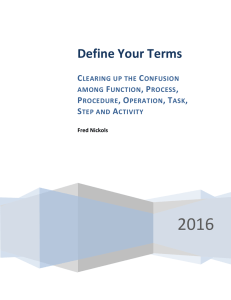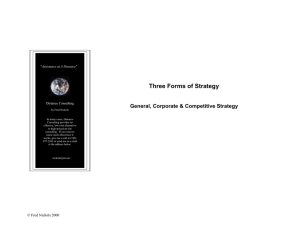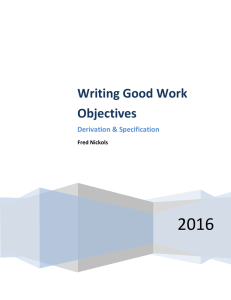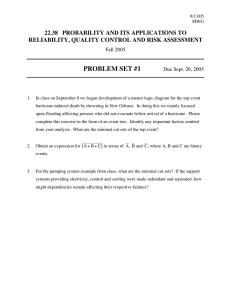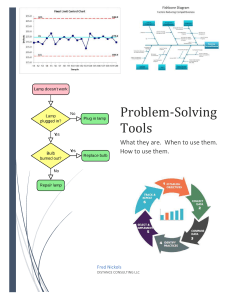Factors Affecting Performance
advertisement
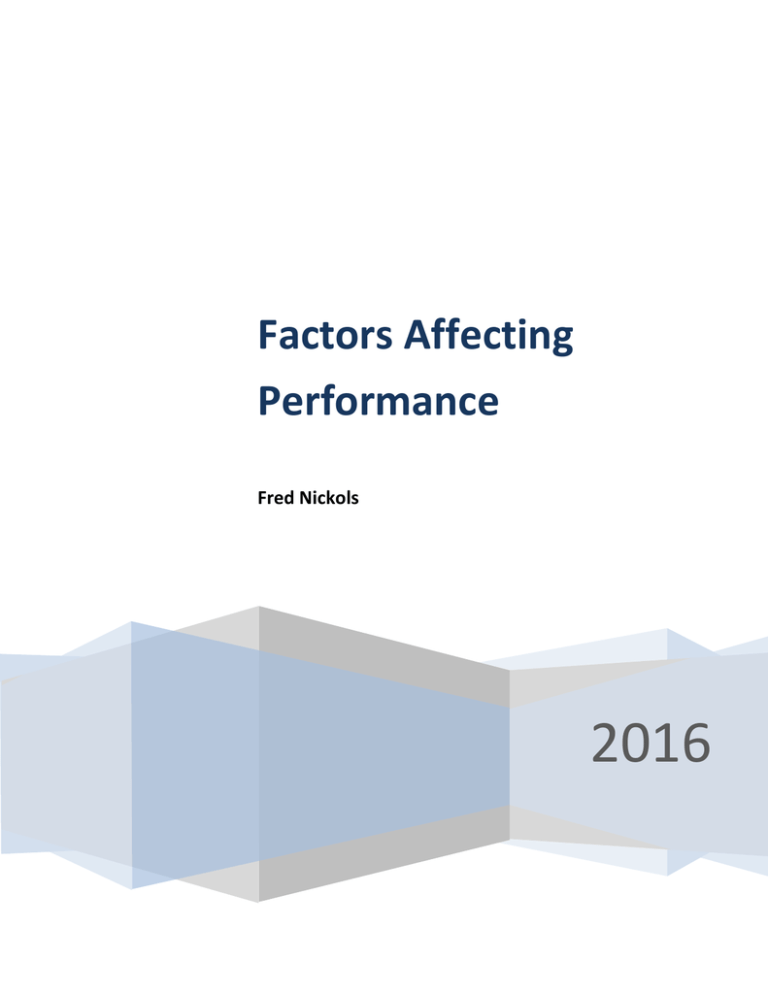
Factors Affecting Performance Fred Nickols 2016 FACTORS AFFECTING PERFORMANCE I NTRODUCTION This brief paper addresses seven of the more important factors affecting the performance of people in the workplace (see Figure 1). Figure 1 – Factors Affecting Performance G OAL C LARITY People must have in mind a clear picture of any end or goal they are to achieve. Without this picture they cannot tell if they are making progress or when they have completed the task or assignment, let alone if it has been completed properly (see feedback below). “Keep the end in view” has been sage advice for almost two thousand years. The time a manager spends developing, communicating and clarifying the goals or ends to be achieved is time well spent. R EPERTOIRE To achieve a goal, the people working toward it must possess a suitable, flexible repertoire. They must be able to engage in whatever behaviors are necessary to obtain that goal – despite changing circumstances and environmental disturbances. In some cases, this will involve carrying out a routine that has been specified in advance by someone else. In other cases, it will require figuring out — on the spot — an appropriate course of action. In many situations, the end to be achieved will remain constant but the conditions under which it is to attained will vary. K NOWLEDGE OF S TRUCTURES Figuring out what to do in a particular situation requires knowledge of the structure of that situation. People must understand the elements © Fred Nickols 2016 Page 1 FACTORS AFFECTING PERFORMANCE making up the situation, how those elements are connected to one another and the relationships that exist between and among these elements. This knowledge of the structure of the situation allows people to say how the actions they envision taking will lead to the result they seek. It also allows them to say, for a given result, the actions required to produce it. Absent this knowledge, action is little more than a shot in the dark and achieving desired results depends on luck or intuition. F EEDBACK Feedback is information about actual conditions that can be compared to intended goals or results. Without feedback, no one can perform to standard. Feedback informs progress, enables corrections and, eventually, signals attainment of the objective. For most “hard” tasks (i.e., tasks involving tangible products or other immediate and readily measured effects of one’s actions), feedback is generally available without much effort on anyone’s part. We are aware of our actions and their effects. But, for “soft” tasks (i.e., tasks where the effects of our actions are not tangible, immediate nor readily measured), the feedback loop is essentially open. This is especially true when the main effects of a person’s actions are the reactions of other people. M ENTAL M ODELS Absent feedback, people have no choice except to act in ways that are consistent with internally-held views or mental models of what is appropriate or what should work instead of externally-based information about what is and isn’t actually working. For this reason, it is worthwhile spending time working with people to identify the mental models they currently use in situations where feedback isn’t readily available. In some cases, this will surface mental models that are inappropriate or inadequate. In other cases, it might surface mental models that are superior to those held by most people. M OTIVATION It is one thing to be capable of doing something; it is something else altogether to want to do it. Setting aside the issue of coercion, people generally want to do things for two basic reasons: (1) it serves some purpose of their own or (2) it serves someone else’s purpose and they’ve accepted something in return for doing whatever it is that © Fred Nickols 2016 Page 2 FACTORS AFFECTING PERFORMANCE someone else wants done. Self-satisfaction and incentives; these are the two great motivators. E NVIRONMENT Even if the first six factors are present, performance might not occur if the environmental conditions are so unsuitable as to present insurmountable barriers to performance. Most of us can successfully drive our cars on windy days but none of us can drive through a tornado. In less dramatic terms, missing tools and equipment, competing priorities, a repressive climate and other factors can interfere with our ability to perform as expected, regardless of our motives or our repertoire, the presence or absence of feedback and the quality of the mental models that guide our thinking and actions. In short, the task environment must support the desired performance; at the very least, it must be manageable. R ECAPITULATION The seven factors that make performance possible are these: 1. 2. 3. 4. 5. 6. 7. a clear picture of the ends to be attained, a suitable repertoire, knowledge of the structure of the situation, a functioning feedback loop, suitable mental models, adequate motivation and a supportive or manageable task environment. If you’re concerned about your performance or the performance of other people, a good place to start your analysis is with the seven factors listed above. C ONTACT THE A UTHOR Fred Nickols can be reached at this e-mail. Additional articles about training and human performance are available on that section of his web site. © Fred Nickols 2016 Page 3
